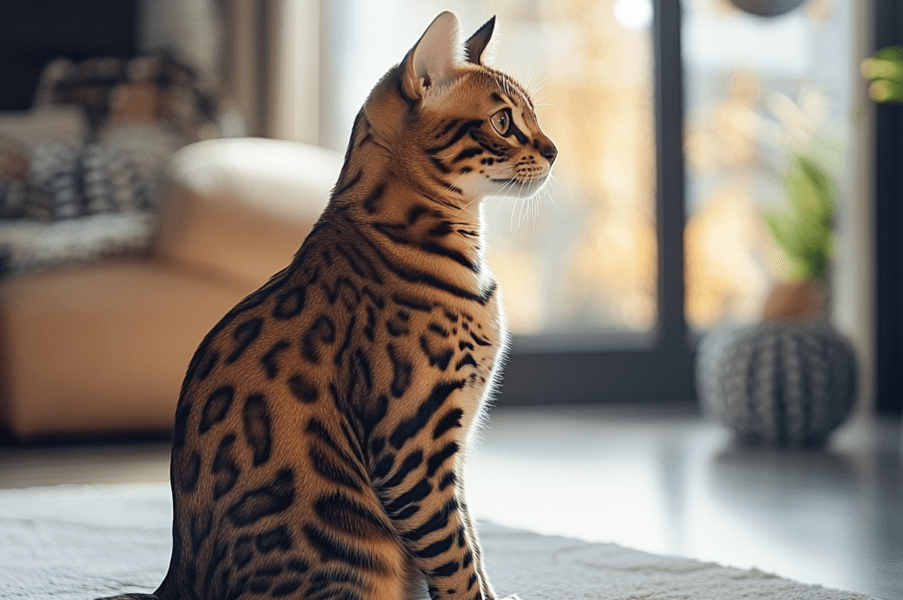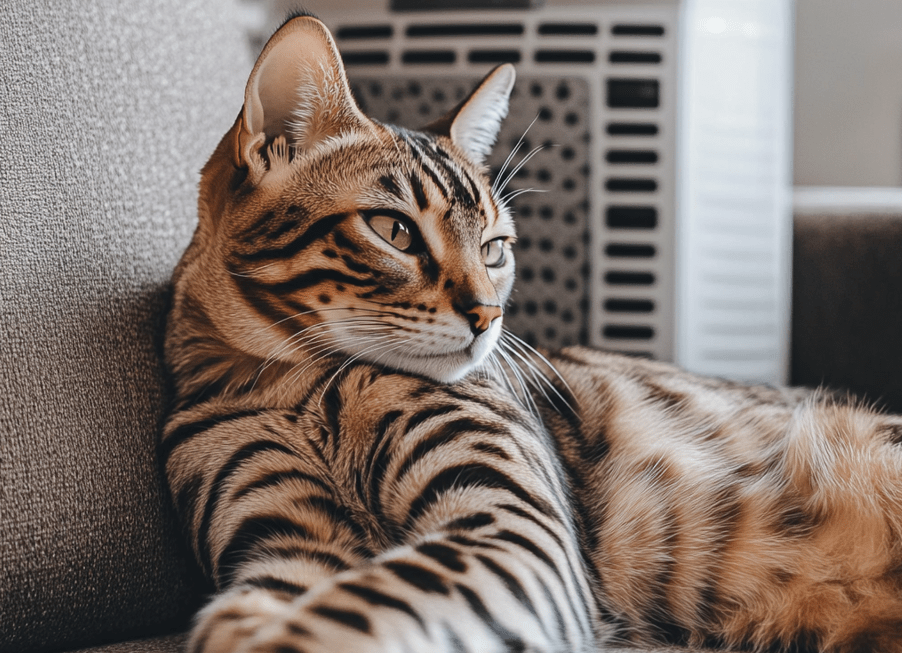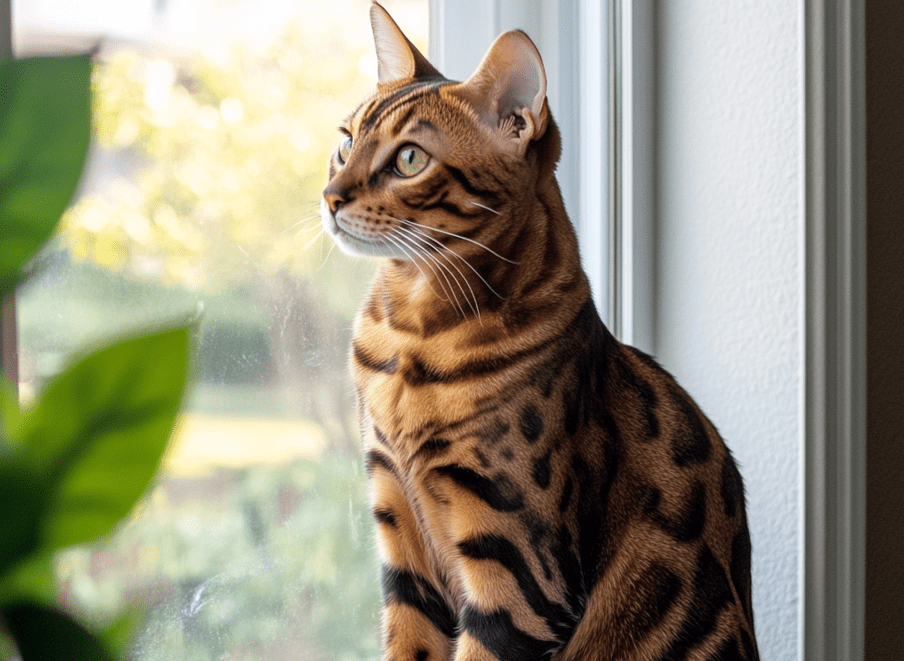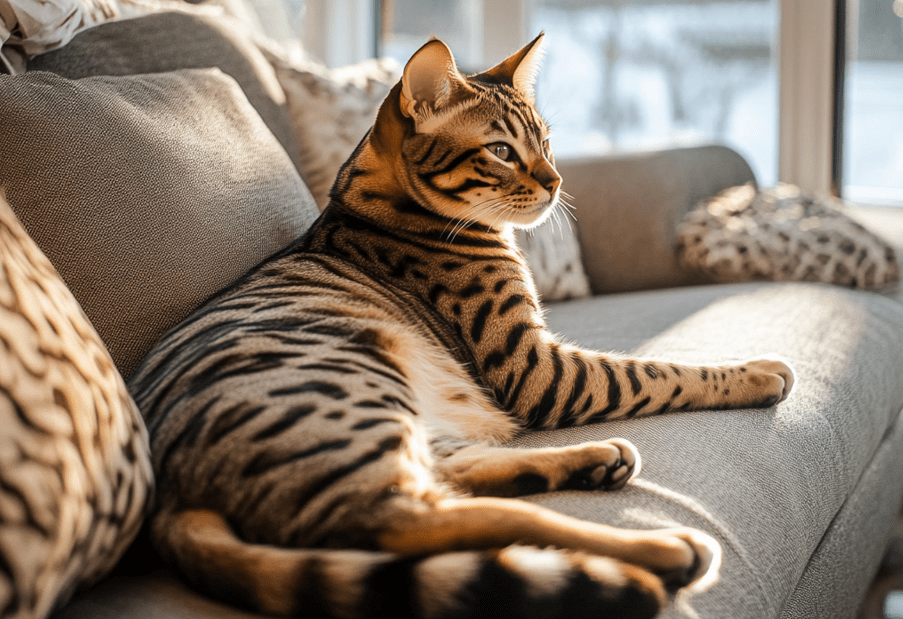
Bengal cats, with their striking leopard-like coats and boundless energy, require a home that caters to their unique needs. Creating a Bengal-friendly home involves designing a space that ensures safety while providing ample stimulation to keep these intelligent, active cats happy. This comprehensive guide offers practical ideas for making your home a haven for your Bengal, covering safety measures, enrichment strategies, and tips to prevent boredom. Whether you’re a new Bengal owner or looking to enhance your cat’s environment, this article will help you build a safe and engaging space for your feline companion.
Understanding Bengal Cats’ Needs
Bengal cats are a hybrid breed, descended from the Asian leopard cat, which gives them a wild, athletic demeanor. Their high intelligence, curiosity, and energy levels demand an environment that supports their physical and mental well-being. Creating a Bengal-friendly home means addressing their need for climbing, exploring, scratching, and social interaction while ensuring their safety. A well-designed home prevents destructive behaviors, reduces stress, and fosters a strong bond between you and your Bengal.
Key Needs of Bengals
Physical Activity: Bengals require opportunities to climb, jump, and run to burn off energy.
Mental Stimulation: Puzzle toys and interactive games keep their sharp minds engaged.
Safety: A hazard-free environment protects curious Bengals from injury.
Territorial Comfort: Perches and hideaways provide security and a sense of ownership.
Social Interaction: Bengals thrive on attention from their owners or other pets.
Safety Tips for a Bengal-Friendly Home
Bengals’ adventurous nature means they’ll explore every nook and cranny, so prioritizing safety is crucial when creating a Bengal-friendly home. Here’s how to cat-proof your space.
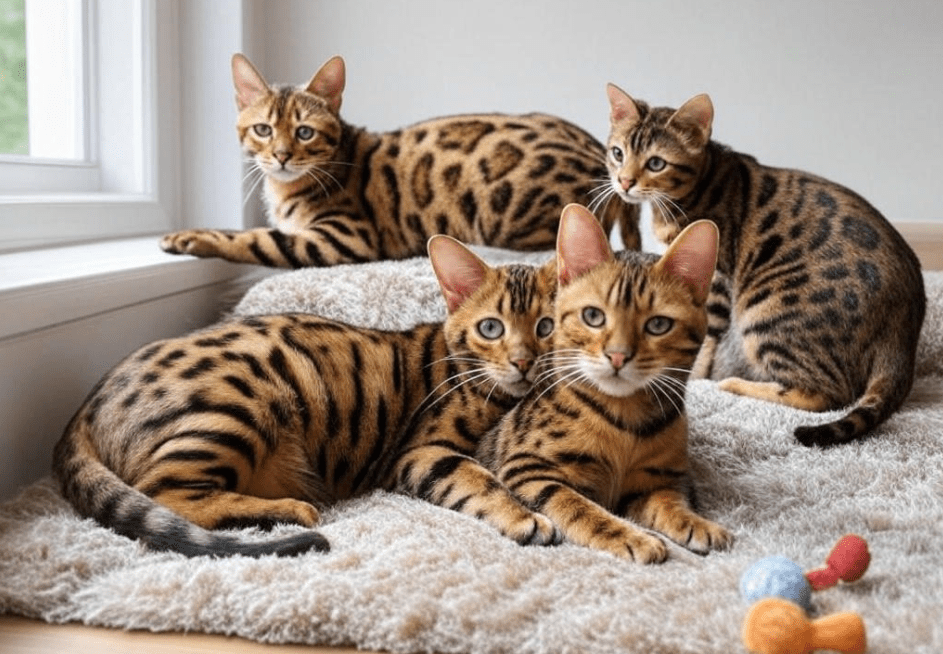
1. Secure Hazardous Areas
Bengals love to climb and squeeze into tight spaces, which can lead to accidents.
Kitchen Safety: Store sharp objects (knives, scissors) in drawers and keep countertops clear of toxic foods like chocolate, onions, or grapes.
Bathroom Precautions: Keep toilet lids down to prevent drowning risks and store cleaning products in locked cabinets.
Cords and Cables: Bundle electrical cords with cable organizers or cover them with pet-safe tubing to prevent chewing.
Windows and Balconies: Install sturdy window screens and balcony netting to prevent falls, as Bengals are prone to chasing birds or insects.
2. Remove Toxic Plants and Substances
Many common houseplants and chemicals are toxic to cats.
Plants to Avoid: Lilies, aloe, pothos, and peace lilies can cause severe illness if ingested.
Safe Alternatives: Cat-safe plants like catnip, spider plants, or wheatgrass.
Chemicals: Store antifreeze, pesticides, and medications in secure, cat-proof containers.
Tip: Check the ASPCA’s list of toxic and non-toxic plants for guidance.
3. Secure Furniture and Shelves
Bengals’ climbing instincts can lead to toppled furniture or shelves.
Anchor Heavy Items: Use wall anchors or brackets to secure bookshelves, TVs, and dressers.
Clear Shelves: Remove fragile or heavy objects from high surfaces to prevent them from falling.
Create Safe Climbing Paths: Install wall-mounted cat shelves or perches to redirect climbing instincts.
4. Litter Box Safety

A clean, accessible litter box is essential for your Bengal’s health.
Location: Place the litter box in a quiet, low-traffic area away from food and water bowls.
Type: Bengals prefer large, uncovered boxes with low sides for easy access.
Maintenance: Scoop daily and clean the box weekly to prevent urinary tract issues.
Tip: Provide one more litter box than the number of cats (e.g., two boxes for one Bengal).
5. Check for Small Objects
Bengals may swallow small items during play or exploration.
Hazards: Hair ties, rubber bands, buttons, or small toys.
Solution: Store these items in closed containers and vacuum regularly to remove stray objects.
Safe Toys: Use larger, durable toys like balls or feather wands that can’t be swallowed.
Stimulation Ideas for a Bengal-Friendly Home
To keep your Bengal engaged and prevent boredom, incorporate enrichment activities and features into your home. These ideas cater to their active, intelligent nature while making creating a Bengal-friendly home a fun and rewarding process.
1. Install Vertical Spaces
Bengals love height, as it mimics their natural desire to perch and survey their territory.
Cat Trees: Invest in a sturdy, multi-level cat tree (4-6 feet tall) with platforms, scratching posts, and a hammock. DIY options allow customization (see our guide on building a DIY cat tree).
Wall-Mounted Shelves: Create a climbing wall with staggered shelves or cat-specific perches, leading to a high vantage point.
Window Perches: Install suction-cup window perches for bird-watching, a favorite Bengal pastime.
Tip: Place perches near windows or in sunny spots for maximum appeal.
2. Provide Interactive Toys
Interactive toys engage your Bengal’s hunting instincts and problem-solving skills.
Top Picks:
Circuit Ball Toys: Like the Catit Senses 2.0, encouraging chasing and swatting.
Puzzle Feeders: Trixie Brain Mover or treat-dispensing balls for mental stimulation.
Laser Pointers: Rechargeable models for high-energy chase sessions.
Electronic Toys: Motion-activated toys like PetFusion Ambush mimic prey.
Rotation: Swap toys weekly to maintain novelty and prevent boredom.
Safety: Supervise play with string or feather toys to avoid ingestion.
3. Create Exploration Zones
Bengals thrive on discovery, so design areas that spark curiosity.
Tunnels: Cardboard or fabric tunnels for crawling and hiding.
Cardboard Boxes: Stack boxes with cut-out entrances for a DIY maze.
Hideaways: Cozy cat beds or igloos for quiet retreats.
Tip: Sprinkle catnip or hide treats in exploration zones to encourage use.
4. Encourage Scratching
Scratching is a natural behavior for Bengals, marking territory and maintaining claw health.
Scratching Posts: Use sisal-wrapped posts (at least 3 feet tall) for durability.
Scratching Pads: Cardboard or carpeted pads for variety.
Placement: Position posts near furniture to redirect scratching.
Training: Rub catnip on posts and reward your Bengal for using them.
5. Incorporate Training and Play
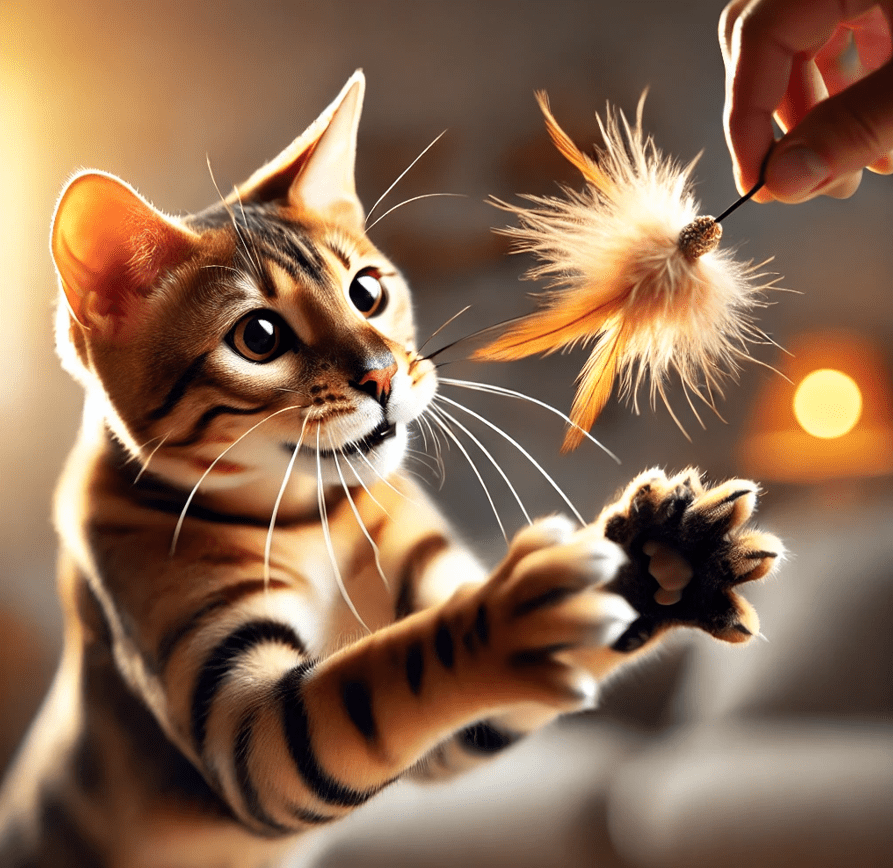
Bengals are highly trainable, and training sessions provide mental exercise and bonding.
Tricks: Teach “sit,” “fetch,” or “high-five” using treats and a clicker.
Play Sessions: Schedule 15-20 minutes of interactive play twice daily with feather wands or balls.
Benefit: Training reinforces your role as their trusted companion and reduces attention-seeking behaviors.
6. Offer Sensory Stimulation
Engage your Bengal’s senses to keep them entertained.
Visual: Place a bird feeder outside a window or play cat-specific videos (e.g., birds or fish).
Auditory: Use toys with bells or crinkle sounds, but avoid overly loud noises.
Olfactory: Grow catnip or silver vine plants for safe sniffing.
Tip: Rotate sensory stimuli to maintain interest.
7. Design a Feeding Routine
Make mealtime engaging to mimic hunting behaviors.
Puzzle Feeders: Use treat-dispensing toys to slow eating and provide mental challenges.
Multiple Feeding Stations: Scatter small portions around the house to encourage exploration.
Hydration: Install a pet water fountain to promote drinking, as Bengals love running water.
Tip: Consult your vet for portion sizes to prevent overfeeding.
Common Mistakes to Avoid
When creating a Bengal-friendly home, steer clear of these pitfalls:
Underestimating Activity Needs: Bengals require more stimulation than average cats. Provide ample toys and vertical spaces.
Ignoring Safety Hazards: Regularly check for exposed cords, toxic plants, or unstable furniture.
Overcrowding: Too many toys or perches in a small space can overwhelm your Bengal. Balance open and enriched areas.
Inconsistent Routines: Stick to regular feeding, play, and litter box schedules to reduce stress.
Neglecting Social Needs: Spend quality time with your Bengal to prevent loneliness or destructive behavior.
Signs Your Home Isn’t Bengal-Friendly
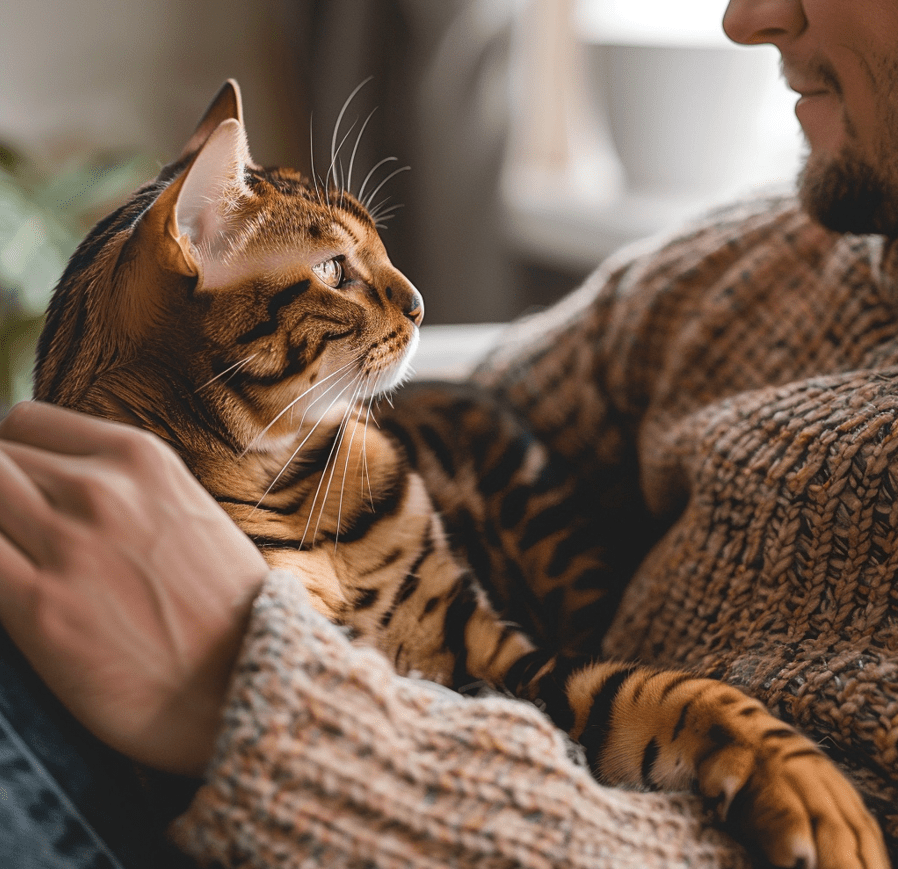
If your Bengal exhibits these behaviors, your home may need adjustments:
Destructive Scratching: Indicates insufficient scratching posts or boredom.
Excessive Vocalization: Suggests attention-seeking or lack of stimulation.
Hiding or Aggression: May signal stress from an unsafe or unengaging environment.
Lethargy: Could indicate boredom or health issues (consult a vet if persistent).
Litter Box Issues: Stress or poor litter box placement may cause avoidance.
Conclusion
Creating a Bengal-friendly home is about blending safety with stimulation to meet your cat’s physical, mental, and emotional needs. By cat-proofing your space, installing vertical perches, providing interactive toys, and maintaining consistent routines, you’ll create an environment where your Bengal thrives. Regularly assess your home for hazards and refresh enrichment activities to keep your cat engaged. With these strategies, you’ll foster a happy, healthy Bengal and strengthen your bond through a thoughtfully designed home.
For more Bengal care tips or product recommendations, consult your veterinarian or trusted pet resources. Your Bengal will love their safe, stimulating sanctuary!

